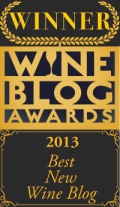A few months ago, I had a conversation with a respected wine journalist and Master of Wine that left me incredulous for this person’s surprising attitude towards coffee. Asked to expound upon the significant parallels between both drinks, a nascent but certainly timely topic, this industry luminary quipped, “The only thing I care about in my coffee is that it is scalding hot.” It wasn’t a joke; it was declared almost indignantly. This writer might as well have told me their favorite beer in the world was Bud Light. Maybe this Mad Men-era opinion was earned after multiple decades in the wine industry, but I like to think not; and if you think this way, you are woefully out of date as well.
How could a wine lover and educator, a connoisseur of flavor and devotee to complexity and origin, nonchalantly dismiss another comparably complex, fragile, and nuanced liquid gift from the earth?
I write Unscrewed, a Village Voice column dedicated to wine, and Filtered, also for the Village Voice, dedicated to New York’s ever-evolving coffee (and tea) world. These two realms share many parallels that wine lovers should appreciate. If you start to look at coffee like wine, you’ll drink better brew.
A Comparison of Coffee and Wine
Species and varietal classifications are key to understanding taste profiles
In the vinous world, grapevines Vitis vinifera (what we mostly drink) and Vitis labrusca (includes the Concord grape, and has earned a reputation for less desirable foxy aromas) are examples of high-quality v. working quality species. For coffee, that parallel is drawn between Arabica and Robusta.
Your local barista sells Arabica beans. She makes espresso with Arabica, pours your V-60 or Chemex with Arabica, serves drip from the Fetco with Arabica.
Robusta is considered a lower quality source. It’s mostly grown in Vietnam (when’s the last time you were offered a pour over originating in Vietnam?) and is used in many commercial blends such as Maxwell House, Yuban, and Folgers, whose cans of ground coffee still sell in supermarkets.
Within the Vitis vinifera subset of wine grapes, there are hundreds of varieties commercially cultivated for winemaking — Cabernet Sauvignon, Merlot, and Chardonnay are a few obvious ones.
Coffee’s equivalent of a “variety” is a cultivar. There are thousands of coffee cultivars within the Arabica species, important ones including Bourbon, Caturra, Typica, and the highly-prized, and priced, Geisha.
Each coffee cultivar exhibits certain, consistent flavor profiles but can still transmit the taste of a place, or terroir, when grown in different regions. Imagine the red berry flavors in a robust California Pinot Noir versus similar red fruits coupled with earthy notes in a lighter German version.
 |
Terroir matters
I recall a great quote by writer Gabriel Chase. When attributing terroir to the differences between cognac and armagnac outside of distillation, he likened the notion of doing so to inventing a God to explain the unknown.
Terroir (literally French for soil) attempts to reference the precise growing environment (geography, soil, general climate, plus specific weather patterns that vary to year) of a specific area that renders its wine inimitable.
How tightly that is defined depends on the region and grower. Terroir isn’t given much (try zero) consideration in the large, hot swaths of heavily cropped and irrigated industrial vineyards of Colombard and Ruby Cabernet in Central California. In Burgundy, however, very small plots of land have demonstrated very different terroir. One hectare (about 2.5 acres) of Pinot Noir on a high, sunny slope of Morey-St-Denis compared to a neighbor’s bordering land with forest shade and slightly different soil and mineral patterns, can produce dramatically different wines (the hand of the vigneron notwithstanding).
The concept of terroir is new to coffee and just being explored, but there are some commonalities with wine, especially as far as recognition of origin and the flavor expectations that come with it. For example, several Ethiopian regions are now famous enough that many enthusiasts intrinsically understand that Yirgacheffe, Sidamo, or Harar indicate quality when scrawled on a blackboard in their neighborhood coffee shops.
 |
Sensory Experience: Flavor, body, and acid
Around 200 flavor compounds have been discovered in wine. If you’ve ever been around a professional wine taster assessing a flight of Bordeaux, you may hear terms like cassis, cedar, and graphite bandied about. They’ll also comment on the body: light, medium, or full, and note the acid levels ranging from low to high.
Well, sidle up to a professional coffee cupper or Q grader and listen to the tasting notes they magically pull from a list of almost 500 flavor compounds found in coffee. More than double known to wine!
Just as red Bordeaux wines exhibit certain, consistent characteristics, so to do coffees. For example, recurrent elements found in Ethiopia’s Yirgacheffe (mentioned above) are vibrant acidity, and citrus and floral notes, whereas coffees from Harar often have exuberant fruit aromatics, especially blueberry, apricot, plus spice notes. I can practically taste blueberry pancakes in some of the finest coffees of Ethiopia.
 |
Wine and coffee quality both begin in the farm
Vintners confess that wine is made in the vineyard, and the same holds true for coffee. Just like seasonal harvesters of grapes, coffee farm workers have to learn how to properly pick ripe fruit, sort the good from the bad, and care for the beans to prevent mold or desiccation. Pruning, spacing, pest management, and watering are among the many considerations for coffee farmers, just like grape growers, to control and optimize, and both are susceptible to flavor variability due to seasonality, as well as devastating weather that can wipe out their crops and livelihoods for the year.
Geography
Wine grapes grow within a certain band of latitudes, the 30th to 50th parallels. Excessive heat shuts down grape development. High humidity promotes disease in the vineyard. Frigid weather kills vines during winter. Grapes need defined growing seasons with moderate winters for dormancy. (Although this notion is being challenged with so-calledNew Latitude wines.)
Coffee, also, has geographically productive limitations. The plant prospers in tropical regions, at altitudes generally above 3,000 feet which provides consistency in temperature, sunshine, rainfall, and also better drainage.
Seasonality
Grapes harvest occurs once a year. The concept of seasons applies to coffee harvesting, too. We all likely expect to drink a cup or two of coffee every morning, but we must forgo the notion that it will be the same coffee every day, unless we drink coffee with a heavy roast or from those aforementioned supermarket containers. Kenya’s crop arrives around late winter through spring whereas beans from Central America should arrive from spring through mid-summer.
Other flavor influencers
Compare the result of stainless steel storage versus new French barrique for wine, to the length of time and degree of heat used when roasting coffee. If a winemaker puts a subtle Pinot Noir for two years in new French oak, that Pinot won’t emerge tasting like fruit alone. If a roasters chars a delicate coffee (one could argue most coffees are delicate when green), until it looks like oily, black stones, you also won’t taste the primary fruit character of the coffee. That beautiful blueberry note found in your Harar? Transformed into toast.
 |
I could carry on comparing grape mutations, hybrids, and crossings to coffee cultivars; the effect of hand-harvesting versus machines on grapes and coffee cherries; large, commercial farms versus small, estate grown fruit; and add that home brewers should remember beans are perishable and need to be stored properly, like your wine, but you’ve probably got enough to consider. Just remember, that coffee is a delicate product, as Nobletree’s John Moore said, it’s a “miracle it actually makes it to your cup.”










